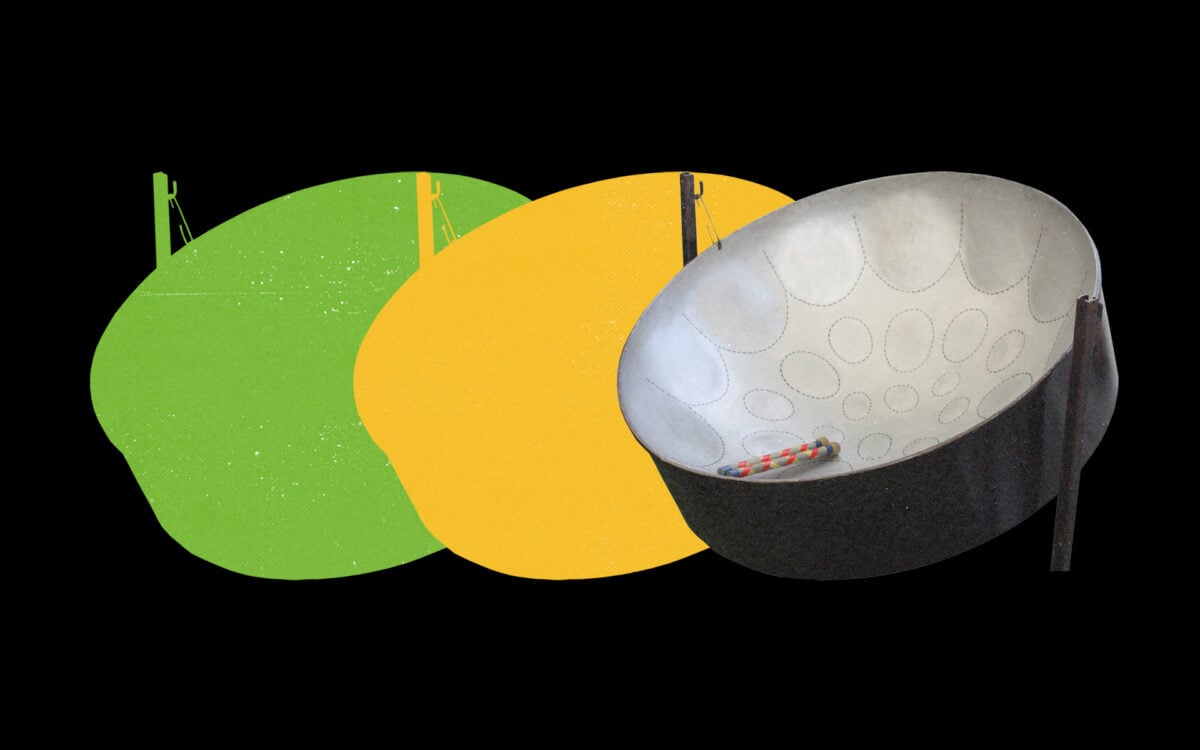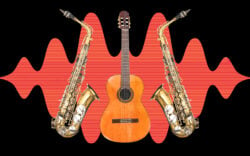Oppressed people have always found ways to make music, in spite of discriminatory laws meant to stop them from doing just that.
In Cuba, for example, enslaved Africans who didn’t have access to building materials would stretch hides over barrels to create drums that would later become today’s congas. In Brazil, people built small agogo bells based on the design of larger gankoguis in the West African Ewe tribe.
In Trinidad, a country subject to centuries of British imperialism, this sort of ingenuity and creativity led to the creation of an instrument that you probably know pretty well: the steel pan. You might’ve heard it in Childish Gambino’s “Summertime Magic,” The Beach Boy’s “Kokomo,” or even in Soulja Boy’s breakout hit “Crank That (Soulja Boy)” – but there’s a lot more to the instrument than its popularity in American pop music.
In Trinidad, colonizers passed many laws in attempts to suppress enslaved and indigenous people, many of which were restrictions on Carnival, a festival that they deemed offensive and sinful. One of these laws, passed in 1877, forbade the playing of drums in the celebratory music of the festival. This wasn’t as effective as colonizers hoped, and it wasn’t long before Trinidadians started bringing bamboo sticks, colloquially known as tamboo-bamboo, to Carnival and stomping the ground with them instead. These bamboo sticks were tuned through shortening and dampening to play a variety of notes, so that each performer could handle a different register and an array of percussion could come together in harmony. These performers called themselves tamboo-bamboo bands, and you can see an example of what their music was like here.
The tamboo bamboo bands evolved over time, and by the 1930s, many of their bamboo instruments were gradually replaced with scrap metal, utensils, and household objects. It began with bottle players, who struck gin bottles with spoons, but it quickly expanded to accommodate all sorts of sound sources and timbres. Through constant experimentation, musicians realized things about the quality of metallic percussion and how to play it – raised surfaces resonate differently than flat ones, thin metals sometimes sustain longer than thick ones, etc.
Winston “Spree” Simon (1930 – 1976)
With these realizations, it wasn’t long before Winston “Spree” Simon built the first steel pan that could accommodate an entire melody on its own. By hammering a piece of metal until eight distinct pitches could be played, he could now play melodies and basic harmonies all on his own. His ideas eventually helped him found TASPO (the Trinidad All-Steel Percussion Orchestra), in which every performer played one of these steel pans together in harmony. But, as important as Simon’s innovations were, chalking the steel pan up to a single person’s creativity would be a disservice to the countless Trinidadian musicians who helped pioneer the instrument. So, let’s talk about some other innovators and inventors who impacted the instrument’s path.
Ellie Manette (1927 – 2018)
Ellie Manette was the first to ever wrap his sticks in rubber, softening the transients of each note and creating an overall smoother sound. He was also the first to bend his instrument into a concave shape, which made room for more notes. Nowadays, it’s hard to find a steel pan player who doesn’t play both a concave steel pan and with softened mallets. Although he passed away in 2018, his legacy lives on through Mannette Musical Instruments, which sells all sorts of steel pans with different tunings and ranges. Some even call Ellie the father of the modern steel pan – but the instrument’s history doesn’t end with him.
Anthony Williams (1931 – present)
Anthony Williams, a former member of TASPO, was the first to look at the surplus of empty 55-gallon oil drums on the island of Trinidad and try his hand at building a steel pan out of one; thanks to him, recycling oil drums is now a standard practice in the creation of steel pans. This is what caused the name ‘steel drum’ to be used alongside its original title of ‘steel pan,’ even though ‘steel drum’ technically refers to the material they’re built out of. Williams was also the first to create what’s called the ‘spider web pan,’ named for the web-like pattern on its surface, which is tuned in fourths and fifths rather than smaller intervals. It’s easier to tune, and more harmonically sound than some previous versions. Now, almost all steel pans in the tenor range use this tuning.
Bertie Marshall (1936 – 2012)
Bertie Marshall was the first to invent the ‘double pan,’ two separately tuned tenor pans to be played by one person. This increased the amount of notes one could play, and allowed for far more interesting melody and harmony from a single performer. It’s very likely you’ve heard one of these; if you want an example, just listen to “Under the Sea” from The Little Mermaid. He was also the first to recognize the damage that prolonged exposure to sunlight had on the instruments, and helped make the practice of performing under canopies more widespread. He didn’t stop there, though; eventually, he even started playing with electronics and amplification. In 1971, he created the Bertphone amplifier, which could adjust the tone and volume of each individual note through a mixer to perfect the sound of an amplified pan.
Dive deeper into the steel plan
All in all, this is just an overview at the expansive history of the steel pan. If you want to learn more about the instrument, you can listen to history told directly from Ellie Mannette himself, or from legendary steel pan performer Neville Jules, who has devoted his life to the culture surrounding the steel pan. He has been playing with steel pan orchestras since they were tamboo-bamboo bands, and he founded Trinidad All Stars, one of the most popular steel pan orchestras out there.
If the history of the steel pan inspires you, we’ve compiled some of Splice’s best steel pan samples into a succinct pack for you to use. Check it out here if you want to try your hand at using the versatile instrument in your own productions. Or, if you can get your hands on an empty 55-gallon oil drum, a hammer, and a torch, you could even take a shot at trying to build one yourself.
July 21, 2020

.svg)
.svg)




